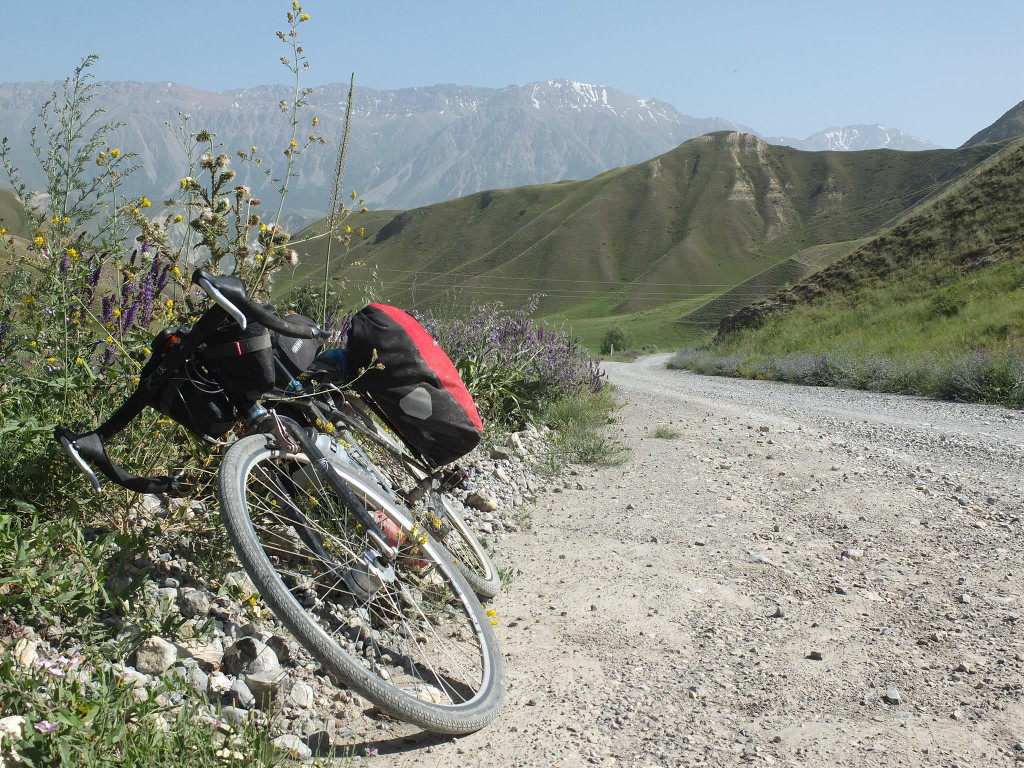On a a world bike tour, pretty much anything that can go wrong, will go wrong at some point or other. I’ve been asked loads of times what kit I used, how much I broke down, how many punctures I fixed or how long stuff took to wear out. So here it is, the kit post. If you’re planning your own tour and want to know what you’re up against, or if you just want to gain vicarious enjoyment from my misfortunes, read on!
Bike Failures
Rear rim (Florida)
This was my own fault – as you can read in A Narrow Escape. I beat the rim into shape and filed out the worst of the dings at the next available bike shop, from where it survived until Memphis where I had ordered ahead to Peddler Bikes for a matching replacement. The rims were H + Son Archetypes laced to 32 spoke Hope hubs, and from this experience they get a big thumbs up.
Handlebars (San Francisco)
This was crash damage. I got car doored and the handlebars were bent, so I replaced them at the driver’s expense at a local shop, along with pannier hardware which was broken too. I couldn’t get any bars I particularly liked so when I found some of my original Fizik Cyrano bars in a shop in Singapore, I replaced them again.

Tribars (Whitehorse, Canada)
One of the bolts attaching these to the main handlebars had ripped out somewhere along the Alaska Highway. I’d been able to bodge it by using a longer bolt, but it was very weak so I wasn’t using the tribars to do anything except as a mount point for my handlebar bag. Luckily for me, Icycle Sports in Whitehorse were able to re-tap the bars so they were good as new – a repair they did when walked in at 16:45 shortly before closing time. What a shop!
Oh and the bars? They were Zipp Vuka Aluminas which I’d had for quite a while before I started.
Chainset (China)
I’d sent a package of spares out to my friends in Guiyang, and ummmed and aahhed about whether to send out some chainrings, but decided to be tight and trust my originals would last. They didn’t, and Shimano had recently changed the bolt circle diameter on their MTB chainsets which meant I couldn’t get matching spares in Guiyang, so I had to replace the entire chainset. Oops. I could then only get a set with really small rings, so ended up buying new rings anyway – for the new cranks – in India.
The original chainset had been about a year old when I started and had been with me to Kyrgyzstan. I’d never worn out a set of chainrings before but between Canada and China I’d been riding through a lot of autumnal conditions so the rings would have experienced a fair bit of wear from muddy chains.
The moral of this tale: don’t skimp on pre-emptive replacements!
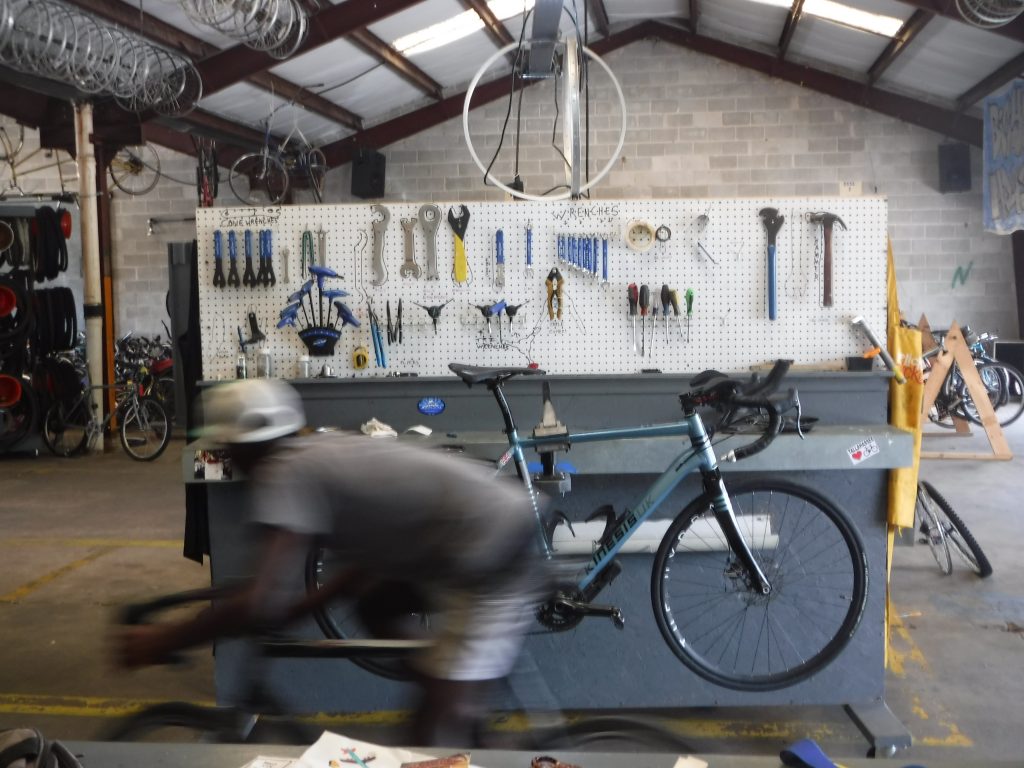
Brake caliper (Singapore)
One of the problems with the chainset was that I was looking forward to a break from cycling in Guiyang, so instead of servicing the bike myself I’d given it to a local shop – who’d hung onto it for too long and then given it back with a load of jobs half done; chain too long, tyres not pumped, gears not indexed, brakes not tightened … you get the idea. Had I done the service myself I’d have noticed the ring was worn and might have been able to order a new one in time. As if this wasn’t enough, the shop also managed to round out the pad bolts on both my brakes! One of them they told me about; they tried to fob me off with a split pin replacement but eventually gave me a proper screw bolt -not from the same model brake but hey ho. The other one they didn’t mention though, and I didn’t find out until I went to replace my pads in Phnom Penh. I got this one drilled out in Bangkok (by Probike) and had a replacement caliper posted out to Singapore.
The moral of this story: do your own maintenance!
Spoke (California)
I broke one spoke in the entire trip, on the rear wheel. Some people think that 32 spokes is too small a number for a touring bike. They’re wrong.
Bottom Bracket (Miami)
This was as old as the chainset, and in the torrential rain and flooding I experienced on the European leg at the start, at some point it got a bit rough and started squeaking so I replaced it once I’d flown to the States. The new one has lasted ever since and is still going strong now.
Hub bearings

A couple of the races were getting a bit rough by Hong Kong (probably after a similar European experience to the BB) so I replaced them there. I couldn’t get hold of very good tools locally though – I could have got them done at the shop where I bought the bearings but that would have meant another trip to the other end of the island – so I suspect I installed one of them a bit wonky as it then came apart in India. I could probably have bodged it if I needed (it was just the side seal of the race that had come adrift) but I had a couple of spares and the Indians had much better tools than the Hong Kong folk, so I changed it again there.
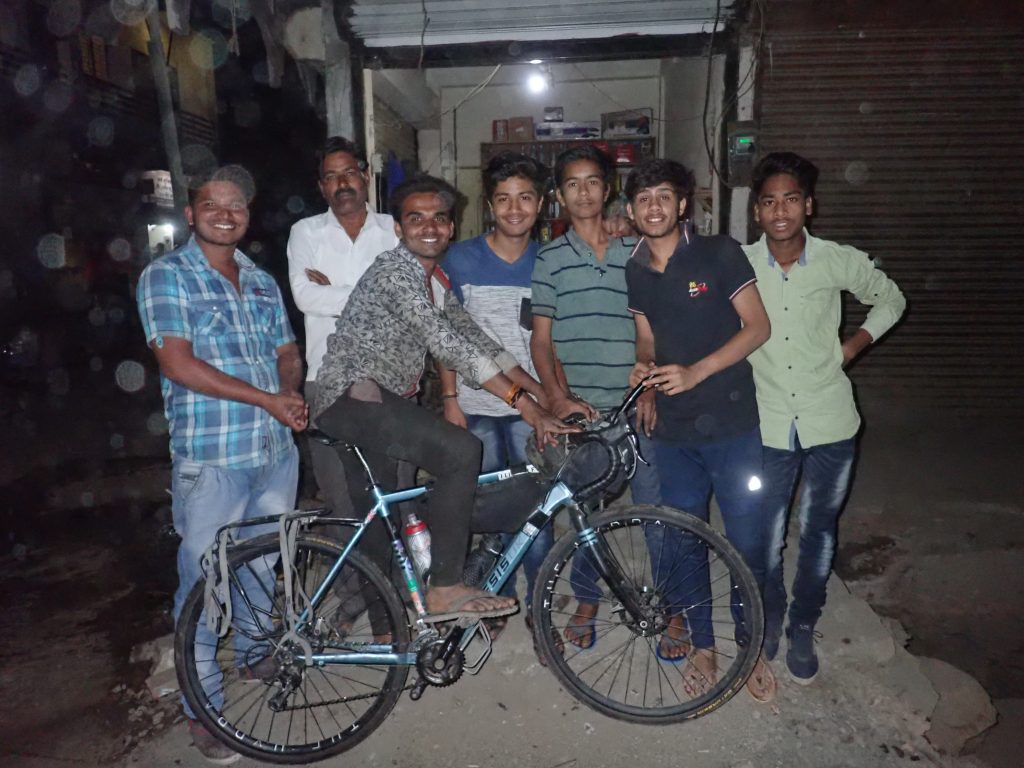
Non-cycling kit
Luggage
At the start I had most of my kit in two rear panniers but I changed this in Oregon, firstly because a big pair of panniers are the next best thing to a parachute and secondly because they put a lot of weight over the rear wheel. I’d known about these issues at the start but thought that they’d be offset by the convenience of having virtually all my stuff in two bags. It turned out the opposite was true: having stuff in more small bags meant I could organise my kit better and leave stuff on the bike if I wasn’t going to use it for a night, which meant I didn’t have such a massive pile of junk to pack up when I was trying to coax myself out of bed in the morning. I fitted a pair of small panniers in place of the big ones, added a frame bag for my tools, a dry-bag on top of the panniers to take my clothes, and another dry-bag strapped under the bars to take my tent and sleeping mat.
Tent
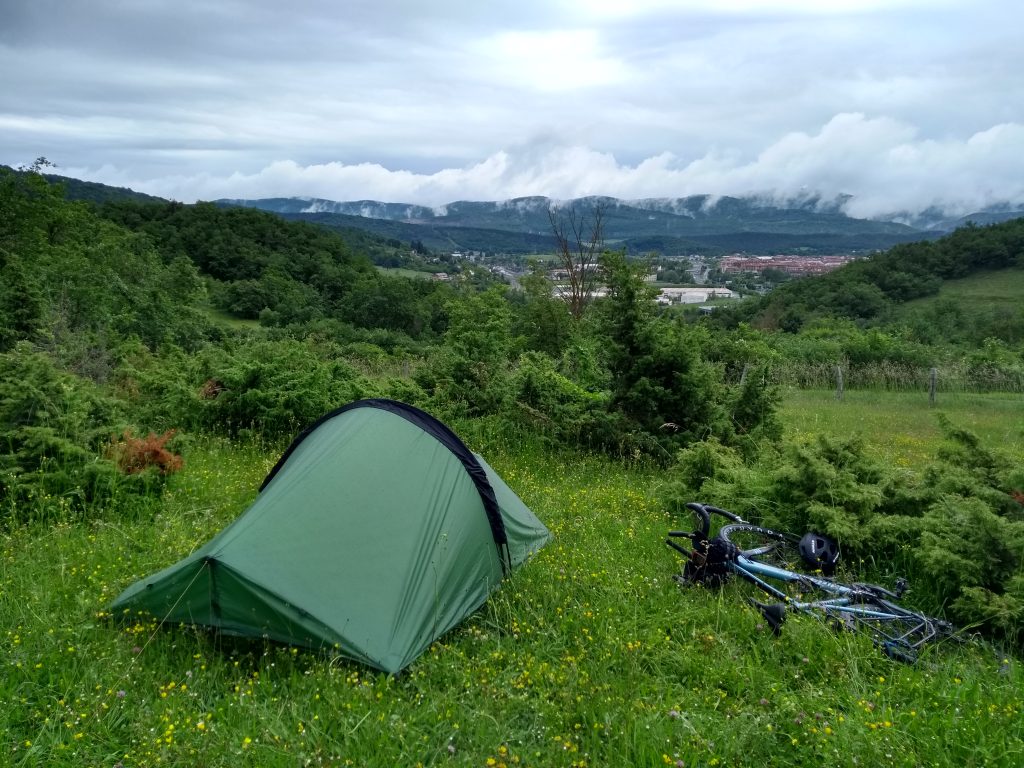
I started with my old tent (a Terra Nova Laser) that I’d had for about ten years. By the time I got to Japan I was having to repair it almost every time I used it, so it was time to look for a replacement.
I’d probably have gone with a Macpac Sololight or Microlight if I could have got one but I couldn’t. Someone in Japan was selling Hilleberg Enan/Akto tents but they’re ridiculously expensive and a bit heavier than the laser, so I went for an MSR Hubba. This was a mistake: American tents are designed for hot and dry conditions, with the inner made mostly of mesh and the outer ending several inches above the ground to allow ventilation (a.k.a. ‘wind’) inside. I had quite a lot of cold nights in Asia so I should have stumped up for the Hilleberg, a european tent that is designed to cope with a bit of weather. I could also have gone with something like a Tarptent, which is made in America but looked quite good, and is well-priced as long as you buy it while you’re inside the US. I’d considered buying one while I was there but decided to make my Terra Nova last – and then it started falling apart a few weeks later. Oops. Again, with hindsight I wish I’d replaced pre-emptively.
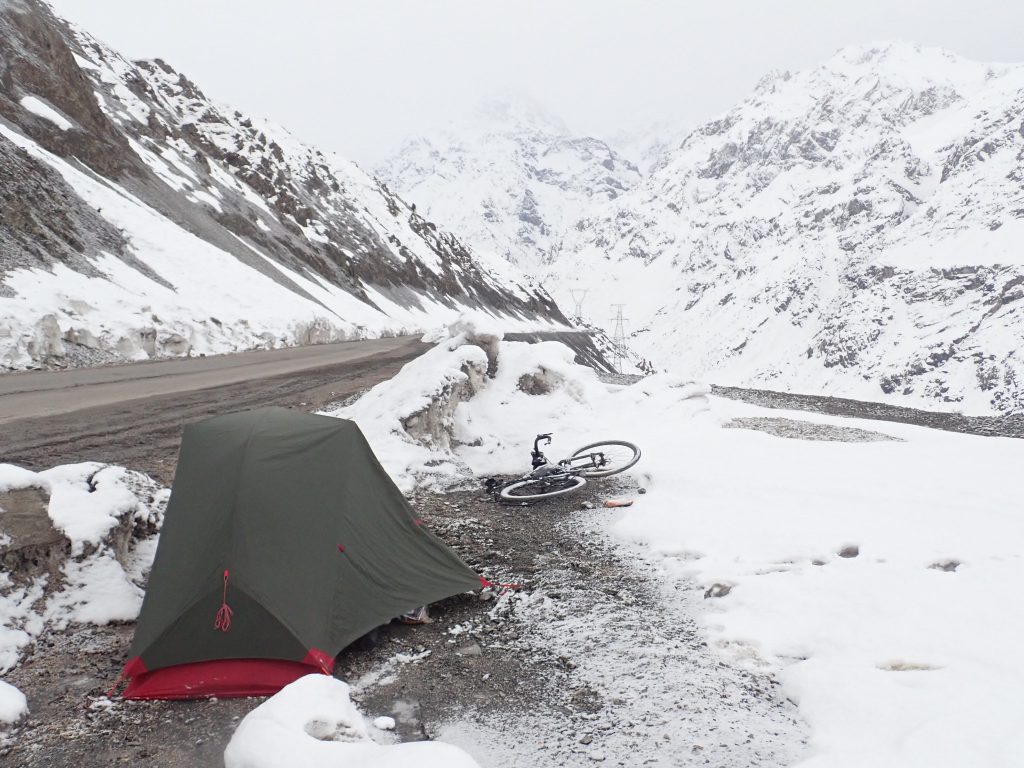
Sleeping Mat
I started with a cheapy Alpkit sleeping mat that I already had. The word on the internet is that these die after about a month and it’s useless trying to repair them as they’ll just fail again, but I decided to get my use out of it and replace it if and when that happened. Sure enough, after about a month it died, so I replaced it with a Sea2Summit Ultralight that is still going strong.
Sleeping Bag
I started with a Snugpak Travelpak Lite https://www.snugpak.com/outdoor/travelpak-1 that I’d had for years and is an excellent summer bag. I bought another summer bag in Canada so I could sleep in both of them, then gave it away in Guiyang and continued with just my Snugpak. That wasn’t a bad plan, though with hindsight I’d have been better buying something slightly warmer and giving away the Snugpak instead. That was mainly a function of switching my tent though, due to the MSR being cooler than the Terra Nova, and also of my skipping Kashmir and putting myself a couple of weeks ahead of schedule in the early spring through Central Asia. Oh well, hindsight eh?
Stove
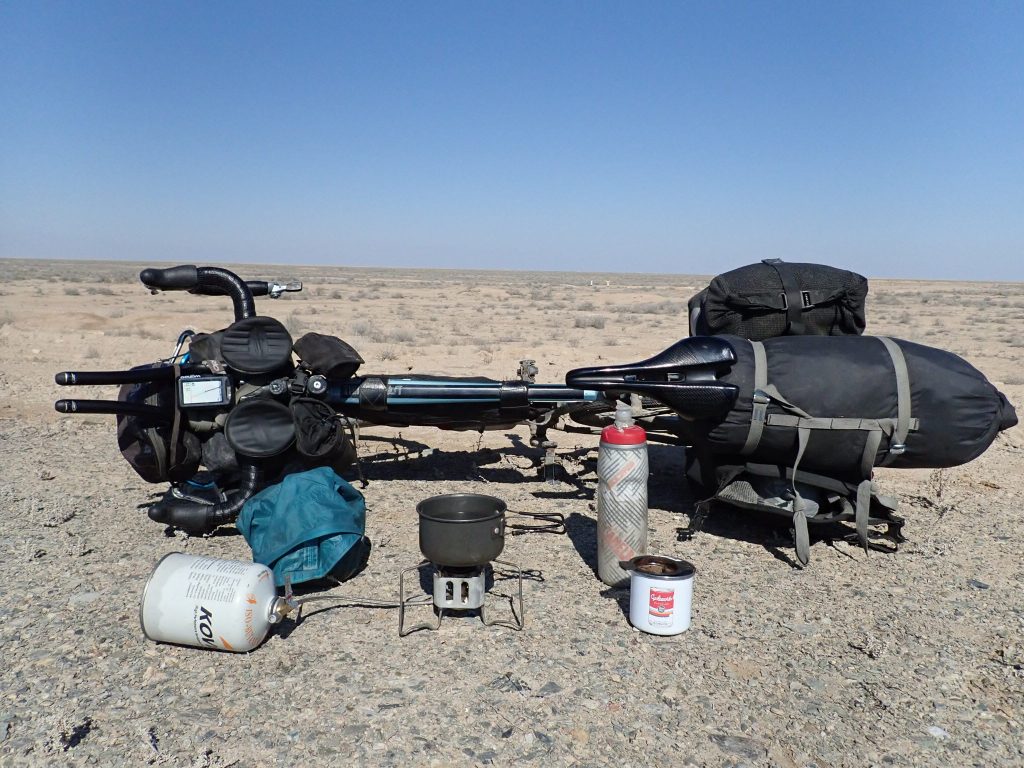
I started with a Soto Amicus gas stove. If I had intended to cross Asia at the beginning, I’d probably have taken a multifuel stove but I hadn’t, so I didn’t. When I then decided to go back that way, I left it a bit late to get a replacement – I probably should have done it in Hong Kong – so I ran out of gas halfway down Vietnam and stopped cooking until Singapore, where I’d checked there were shops with petrol stoves in stock … except oh no there weren’t any, they’d all gone out of stock when I got there! That meant subsisting on bought food all the way up India too, until I collected my petrol stove I’d ordered out to Delhi (an Edelrid Hexon) for the return leg. As it was, I found what might well have been the last gas cylinder in Dushanbe which lasted me across Central Asia; from then on there was gas to be found if I wanted, so if the petrol stove hadn’t been retrieved from the Indian postal system it wouldn’t have been a disaster.
GPS
I started out with a Garmin Etrex 20 which I’d had for several years. It did okay until it went bouncing down the road and broke, somewhere in northern Canada. A nearby shop had its replacement the Etrex Touch 25 on sale at an extremely good price. Lucky me! Or not … it was discounted for a reason, which was that it was an awful, badly documented and super-buggy unit. By the time it bricked itself and died completely four weeks later I was glad: I needed to buy a new GPS but at least I wouldn’t have to pay for chronic stress counselling for trying to use it. I ended up buying a Wahoo ELEMNT, which wasn’t without its foibles but was much better than the Garmin.
Shoes
These were old when I started, they wore out towards the end of America so I bought some new ones in Anchorage which lasted the trip.
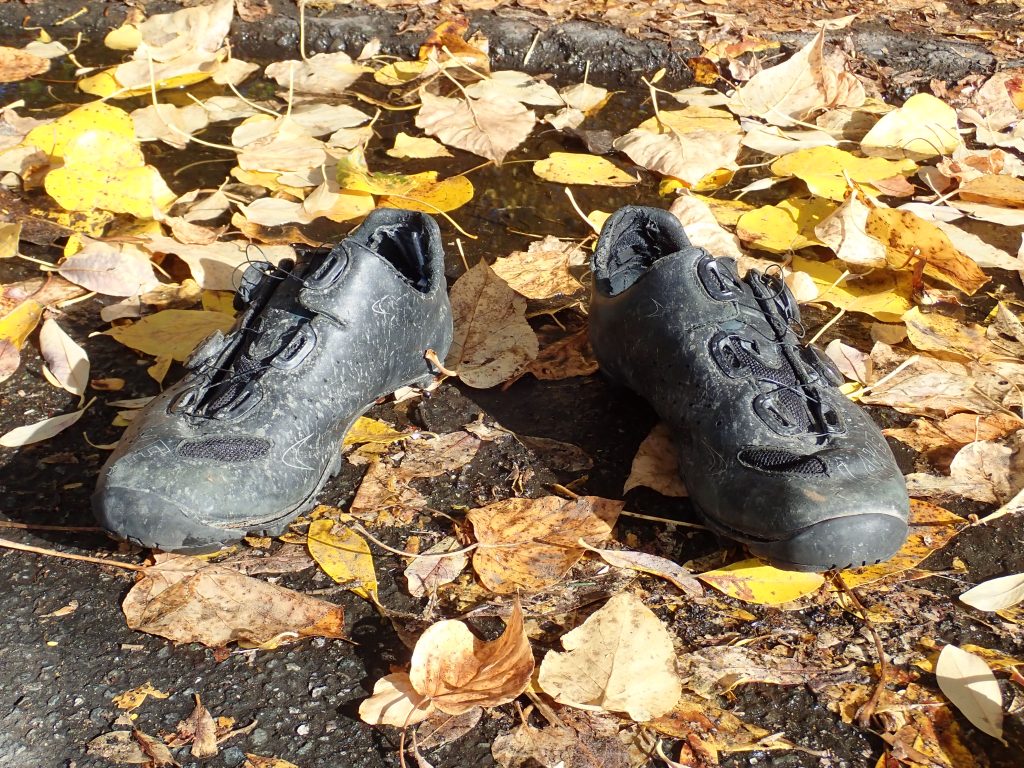
Consumables
Chains and cassettes
I got through a few sets of these – I generally replaced pre-emptively so never really wore them out, apart from my first set i America where I knew I could get them replaced easily.
I’d fitted 8 speed gears which are a bit obsolete nowadays, but I figured that the wider spacings and chunkier chains would be better for my tour. It didn’t really work out that way as the gear ratios available meant that I was always in my top few gears, so I managed to wear them out anyway; a 10 speed setup would have meant I’d have been potentially in my top five gears on the flat rather than my top three. I could also have fitted a triple, or else if I went again I’d consider one of Shimano’s new gravel chainsets, which give ratios between their road and MTB ranges, so I could get low enough gears without staying in my top gear all the time on the flat.

Tyres
I got through a few sets of these too – like chains and cassettes, I replaced pre-emptively. I mainly used Continental Gatorskins, in 28 mm at the start but in 32 mm from Oregon onwards; I like the 32s and I’d use them again. Across Central Asia I ran Schwalbe Marathon Almotion tyres in 38 mm, which was a worthwhile change, except that if I did the Bukhara – Aktau road again I’d go even wider and fit the biggest tyres my frame would take! I refitted the Gatorskins in Batumi (I could have fitted them earlier as the roads in the Caucasus were perfect) and they’re still on the bike now, all the way from Singapore.
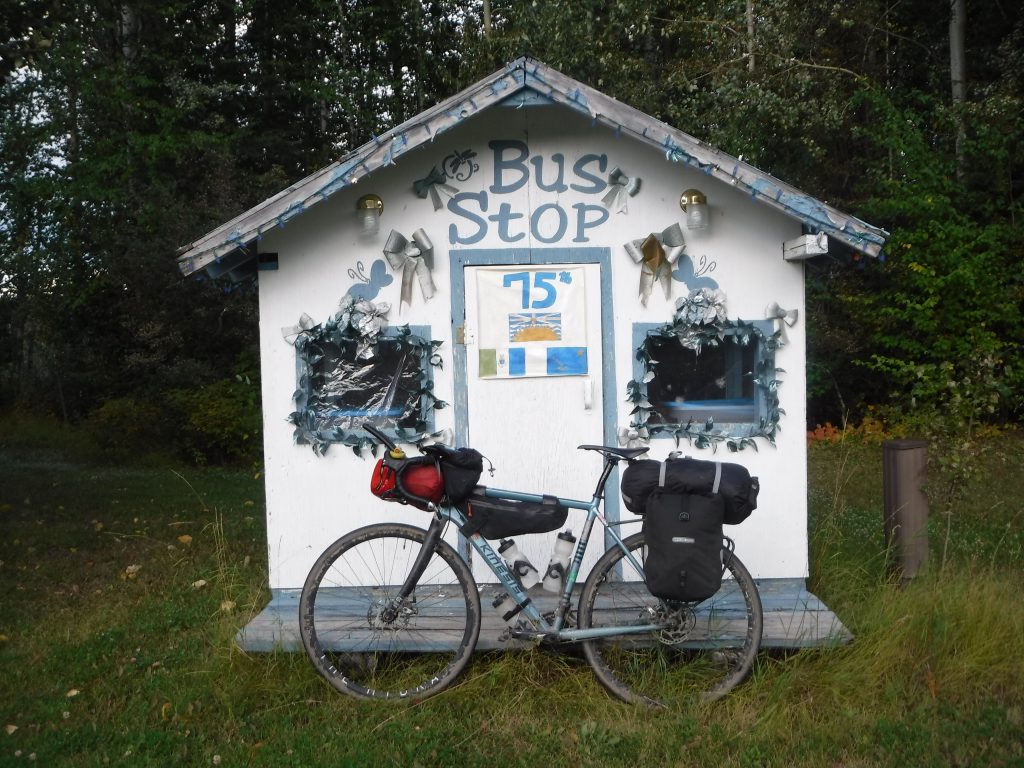
Cables
I replaced the inners once or twice, generally if they’d frayed, and carried spares. I replaced the rear brake outer during a typhoon-enforced rest day in Japan as it was getting a bit spongy but I didn’t bother to replace the front, so that outer made it all the way around the world. One of the gear cables then snapped in Central Asia but I didn’t have any problems apart from that.
Disc rotors
These were another thing I should have put in my spares box for Guiyang. I noticed in Vietnam that the front rotor was worn, so bought another at The Hanoi Bicycle Collective They only had one in stock though, so I ordered a matching pair to Singapore.
Jockey wheels
Old when I started, replaced in Singapore. These aren’t a very exciting replacement are they?
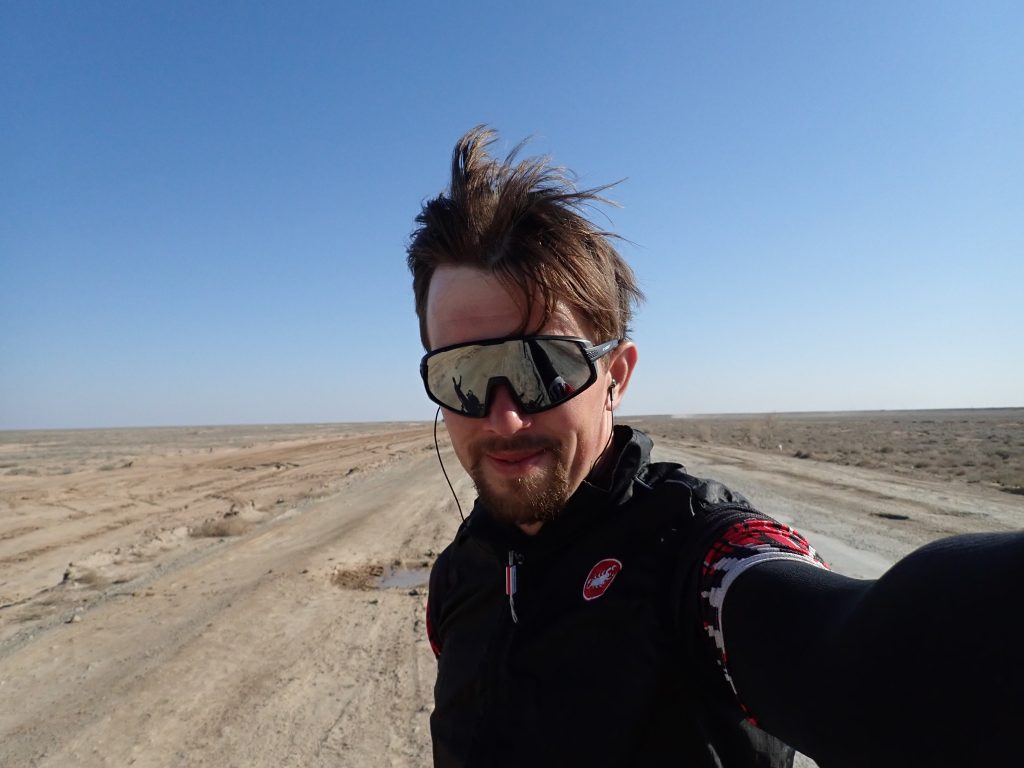
Lessons learned
- Pre-emptive replacement is king – not only does it avoid the stress of having to repair stuff in the field, it also usually works out cheaper – you might not get that last bit of wear out of a component but you won’t be forced to buy something inappropriate at sky-high prices and then replace it when you find the thing you want.
- American tents: don’t do it unless you plan to spend all your time in conditions where you could sleep in the open anyway.
- Starting with everything new is probably a good idea. Then again, I started with quite lot of old stuff as I was spending the first ten thousand miles in Europe and America, where I knew I could replace anything I wanted. This allowed me to work out on the road what I really needed, rather than starting off with a load of new kit and then having to chuck it.
- American bike shops and mechanics are excellent and Indian ones are also good, while those in China and on the Pacific Rim are usually awful. I’d exchange info with other bike tourists as to where the next good shop was – there were usually one or two per country.
- Do your own mechanics – you’re the only person you can really trust.
